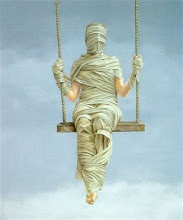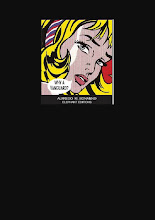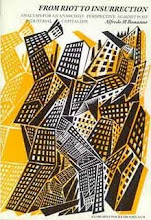Now that the tragic history of fascism has run the full course of its formal development, culminating in the modern democratic State, Rühle’s article becomes more readily comprehensible to us. It was written at the end of the thirties and dedicated to the contemporaneous struggle against both bolshevism and fascism.
The real dominion of present day capitalism shows the authoritarian designs that have provided the platform for contemporary fascism (camouflaged by democracy), and those of contemporary bolshevism (camouflaged by the dictatorship of the proletariat) to be quite similar.
To be more explicit we can say that by shedding formal authority (where it needed the fascism of the stage sets and swastikas) for real power, the capitalist project is developing in the direction of total control. This control can be arrived at in two ways which, however, lead to the same point: a) the democratic one, based on an exterior decentralisation of decision making, reconstituting power in a centralisation of control, such as comes about in the so-called western democracies; b) the State capitalist one, based upon giving exploitation an ideological cover and direct control by the communist party, such as comes about in all the so-called communist countries to one degree or another.
If we evaluate both roads and consider what remains to be done for the exploiters to achieve their aim, we should say that it is precisely the western democracies that are the more advanced of the two along the road of total control, and not the totalitarian ‘communist’ regimes. In fact, in having chosen the quickest road to total control (that of ideology and complete control of the State apparatus) the latter have chosen the least stable and at the same time the most dangerous (for them) road. These regimes are sitting on a huge potential explosion of rebellion, not only of a specific marginalised minority (as is the case with the western democracies), but concerning the great mass of the exploited. On the other hand, the western democracies—not so much through their own merit but through the mechanism of capitalist competition—have found themselves faced with the need to have recourse to more subtle means of dominion and can therefore realise more carefully and intelligently the type of control that characterises real fascism today.
It would be sufficient to examine the different concepts of repression we have seen indicated in the State models mentioned above, to realise how much the fascism of the countries of the ‘dictatorship of the proletariat’ have to learn from the fascism of the countries of ‘western democracy’. In the first, repression strikes not only dissidents as such, but also wide strata of workers and peasants who for various reasons do not accept or simply show no signs of accepting, the domination of the party apparatus. The concentration camps are structured to hold not a criminalised minority of dissidents but vast strata of the population, when not entire communities. In the West, the special prisons—for example in Italy—select a criminalised minority who, through the mechanism of consensus, are extorted from the great mass of exploited and, detached from the social body, are seen to be ‘different’. The modern fascism of western democracy has this characteristic: it sets itself up as a power structure that wants to make everyone ‘participate’ and which wants to exclude no one, but only on condition that control remains in the hands of a restricted minority capable of coordinating all the centres of economic power with the centres of political power, in the view that a total development of control will make economy and politics tally perfectly. The fascism of the ‘communist’ States clearly presents itself as backward, less intelligent, in that the massive use of ideology to condition relationships might lead one to think differently. Basically, however, the strictly spectacular phase of domination (the huge pictures of Lenin, Mao, etc., absolutely unthinkable in western terms) no matter how sophisticated they are, always represent a red form of fascism (we are thinking of the China of the cultural revolution), in essence not much different from the great Nazi parades of Nuremburg, or the prancing of the other buffoon of Palazzo Venezia.
It should be said that Chinese and Russian models of fascism are now turning towards the progressive ‘open’ society typical of western democracies, as even the supreme heights of the party are beginning to understand the difficulties of maintaining formal dominion over the exploited masses by persisting in the use of an eternal regurgitation of spectacular ideology. Perhaps one of the major obstacles to approaching more rational forms of fascism is the politico-military division of the world into power blocks, but that does not change the fact that for example the recent ‘liberation’ of China consented a penetration of the American model if nothing other at that level of production and consumerism.
This brief article by Rühle therefore maintains its relevance. Written in the heat of the momen, surprisingly it perceives relations that, for the time, were extremely intricate and obscure. The struggle against fascism begins with the struggle against bolshevism. Today we repeat in the same way: the struggle against sophisticated fascism begins with the struggle against the more crude and therefore more easily comprehensible variety. In fact, going into the fascist nature of State forms such as the so-called communist ones, we realise that the only solution is the immediate and definitive destruction of power, under whatsoever form it constitutes itself. We confirm that the anarchist model of intervention upon reality is the only one that can make the struggle against fascism proceed in the right direction.
Alfredo M. Bonanno
27 May 1981
27 May 1981












